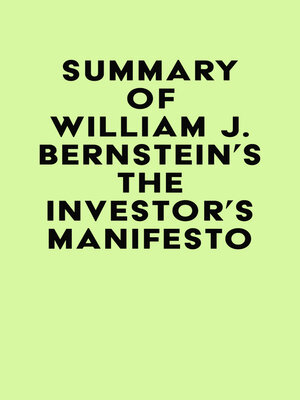
Sign up to save your library
With an OverDrive account, you can save your favorite libraries for at-a-glance information about availability. Find out more about OverDrive accounts.
Find this title in Libby, the library reading app by OverDrive.



Search for a digital library with this title
Title found at these libraries:
| Loading... |
Please note: This is a companion version & not the original book. Book Preview:
#1 The interplay between risk and return is what makes investing so fascinating. In the past, stocks have had high returns because they were risky. But stocks are now so expensive that there are only two possibilities: they are going to fall dramatically in price and then have higher returns after that, or there will be no big fall in price and little risk but low returns thereafter.
#2 The first part of the saga of investing is the development of loan capital. From the beginning of human civilization, consumers have bought products from farmers and merchants, and all three have needed to borrow. The cost of capital was very high in those days, due to supply and demand factors.
#3 The cost of capital is the same for investors and borrowers, and it is the investor's job to understand the risks and rewards of the consumers of his capital. Because of the risks of equity ownership, it did not develop on a large scale until relatively late in history.
#4 The English and Dutch East India Companies, around A. D. 1600, sold shares in their trading ventures, which were initially aimed at exploiting the fabulously profitable East Asian spice trade. The differences between the two companies spoke volumes about the power, wealth, and sophistication of these two nations.






